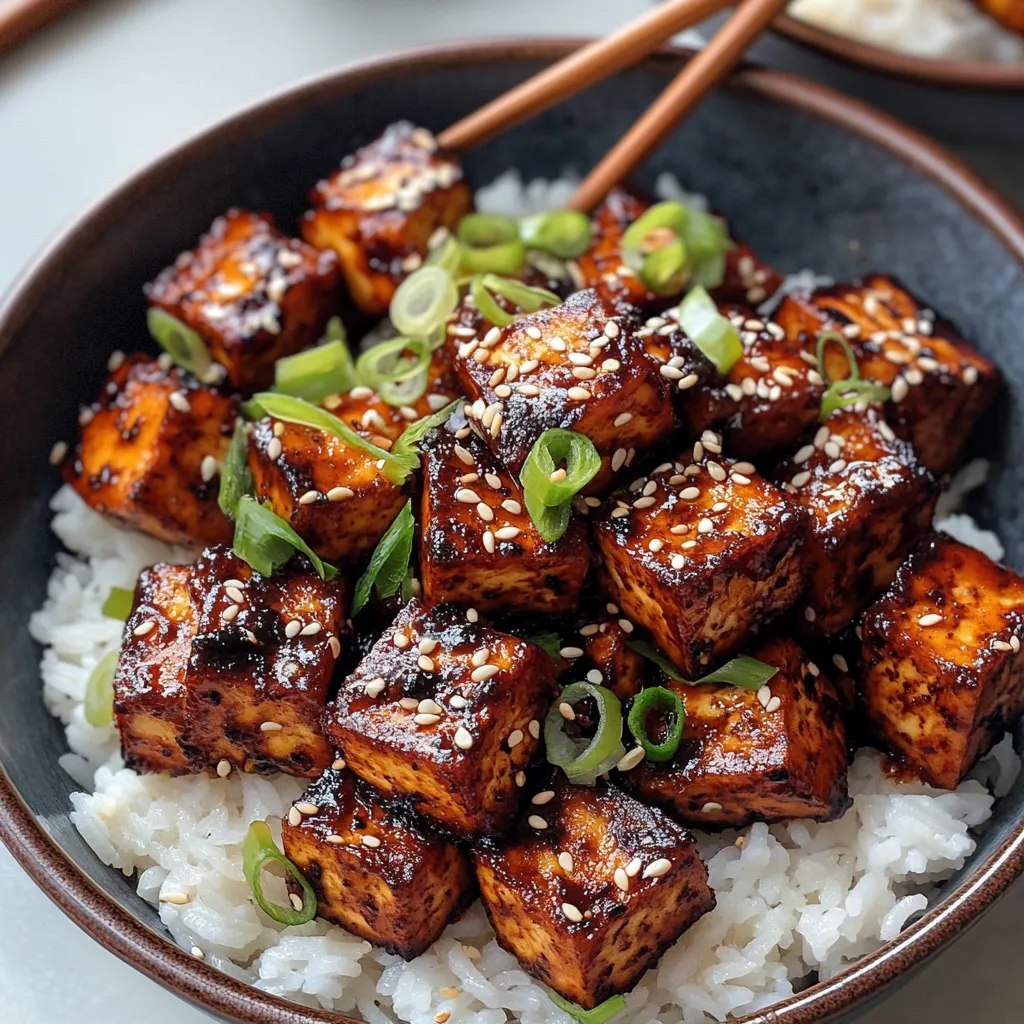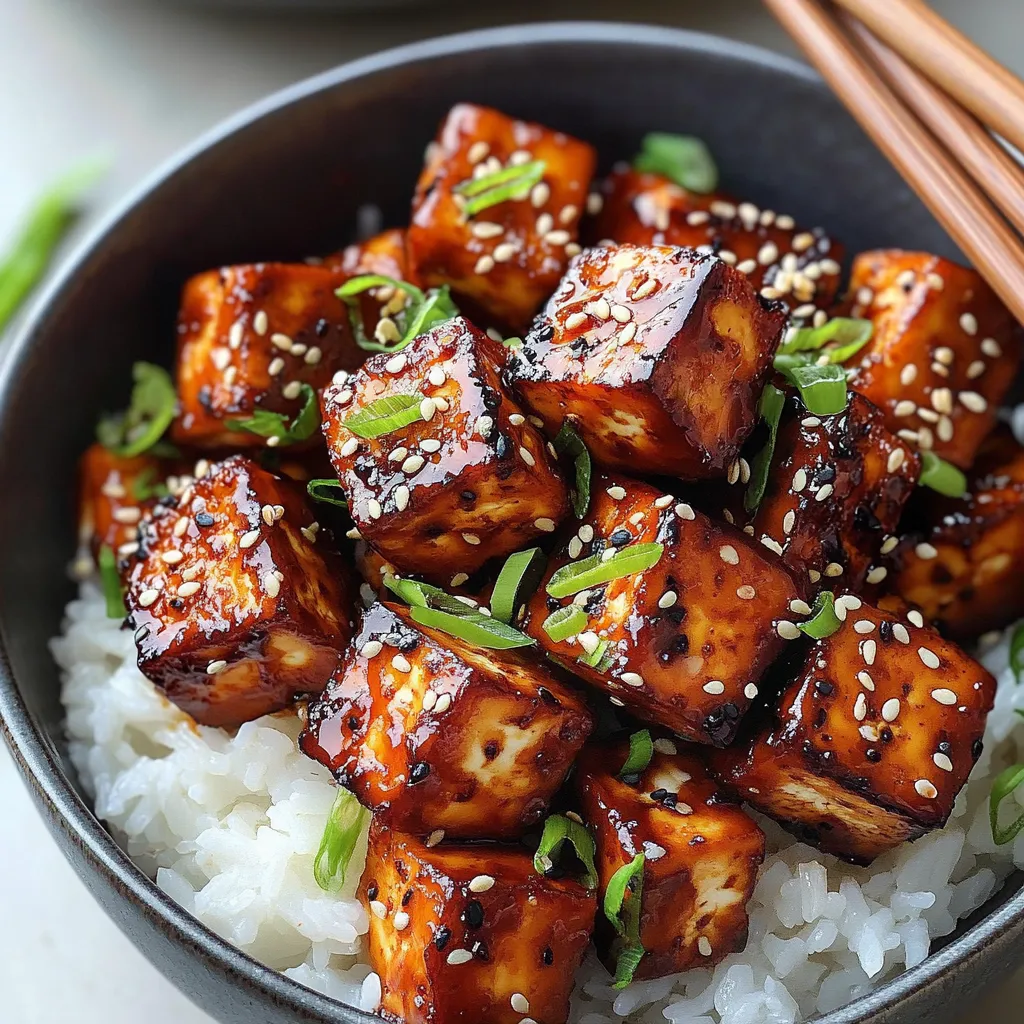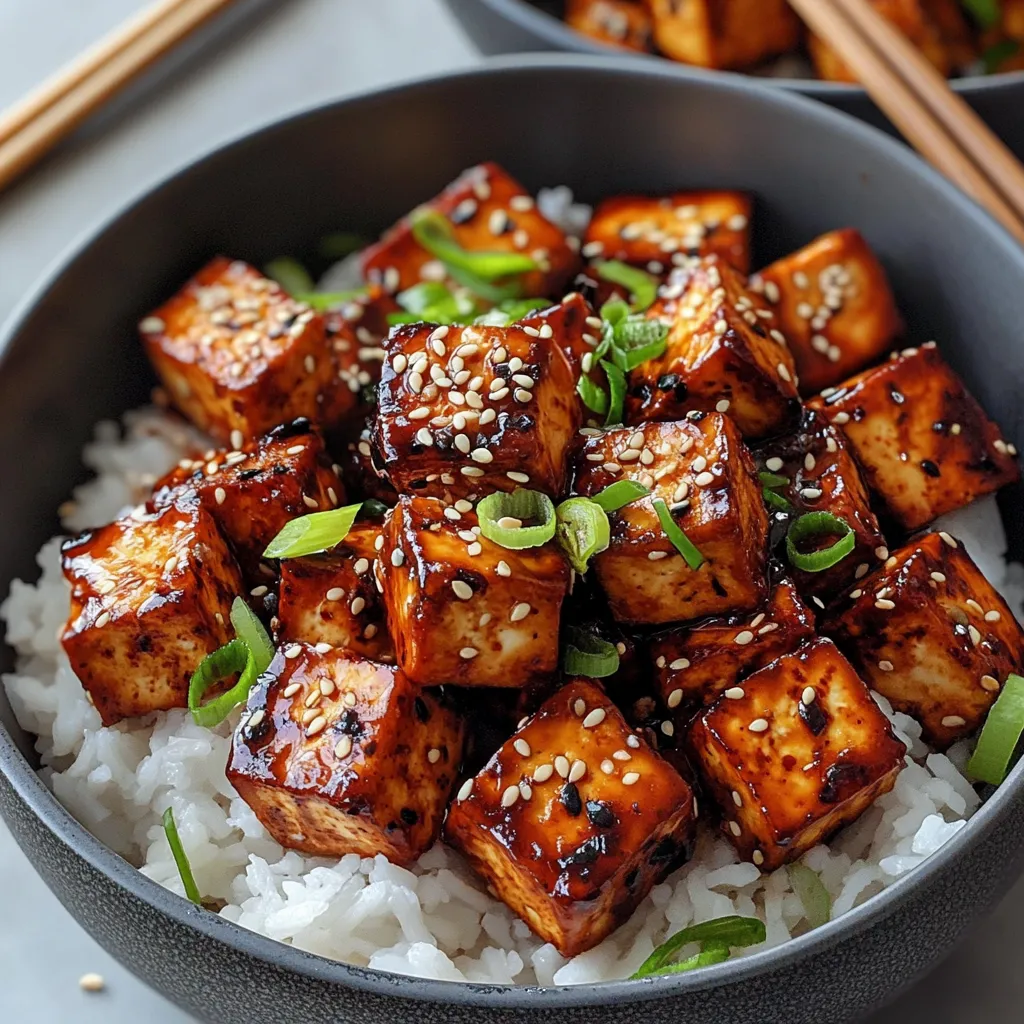 Save
Save
Perfectly crispy golden tofu cubes glazed with a fiery, savory Korean Gochujang sauce create an irresistible dish that satisfies even the most demanding taste buds. The contrast between the crunchy exterior and tender interior of the tofu provides the perfect canvas for the complex sauce with its balanced heat, subtle sweetness, and umami depth. This vegan-friendly creation transforms humble tofu into an addictive meal that disappears quickly from plates.
The first time I served this dish at a dinner gathering, my friend Mark, a dedicated meat-eater, reluctantly tried a piece and then proceeded to eat half the platter. He confessed later that he never imagined tofu could taste so incredible. Now whenever we have gatherings, this dish is specifically requested by guests who previously claimed they "didn't like tofu." Watching their reactions when they taste that first perfectly glazed cube is always a highlight.
Essential Elements
- Firm tofu: Provides the perfect texture foundation that becomes wonderfully crispy outside while maintaining a tender interior; pressing removes excess moisture that would prevent proper crisping
- Cornstarch coating: Creates that crucial golden exterior that stays crispy even when tossed with sauce; the thin layer also helps the sauce cling beautifully to each piece
- Gochujang paste: The star ingredient that delivers complex fermented flavors with its distinctive combination of sweet, savory, and spicy notes that simply cannot be substituted
- Sesame oil: Adds a rich, nutty undertone that elevates the entire dish and complements the fermented flavors of the Gochujang
- Maple syrup: Balances the heat with natural sweetness while adding subtle caramel notes that harmonize with the toasted qualities of the sesame
My journey with this recipe began after tasting something similar at a Korean restaurant years ago. The chef wouldn't share his exact recipe, so I spent months experimenting with different ratios and techniques. The breakthrough came when I discovered that cornstarch creates a significantly crispier coating than flour, and that getting the tofu truly dry before cooking makes all the difference in achieving restaurant-quality crispiness.
Cooking Instructions
- Prepare the tofu:
- Slice open the tofu package and drain all liquid. Wrap the block in several layers of paper towels or a clean kitchen towel, then place something heavy on top for at least 15 minutes. This pressing process removes excess moisture that would prevent proper crisping. Once pressed, cut into 1-inch cubes for the perfect bite-sized experience.
- Create the crispy coating:
- Place the cornstarch in a medium bowl and add your tofu cubes. Gently toss until each piece is lightly but completely coated with the fine white powder. This thin layer transforms into a golden, crunchy exterior during cooking while helping the sauce adhere perfectly later.
- Achieve golden perfection:
- Heat your skillet until a drop of water sizzles immediately upon contact. Add olive oil and arrange tofu cubes with space between each piece to prevent steaming. Allow them to cook undisturbed for several minutes before carefully flipping to achieve that coveted golden brown color on multiple sides.
- Craft the signature sauce:
- While the tofu cooks, whisk together sesame oil, soy sauce, Gochujang paste, rice vinegar, maple syrup, minced garlic and ginger in a bowl until completely smooth. This creates the perfect balance between savory, spicy, sweet and tangy elements that makes this dish so addictive.
- Combine with precision:
- Transfer the crispy tofu to a large bowl while still hot, then pour the sauce overtop. Gently toss using a folding motion rather than stirring to preserve the crispy exterior while ensuring each piece gets evenly coated with the vibrant red sauce.
 Save
Save
During my early attempts at this recipe, I made the critical mistake of not pressing the tofu thoroughly. The result was soggy cubes that never crisped properly and broke apart when tossed with sauce. I've since learned that patience during the pressing stage pays enormous dividends in the final texture. Another game-changing discovery was that cooking the tofu in batches prevents overcrowding the pan, which allows each piece to develop that perfect golden crust instead of steaming against its neighbors.
Serving Inspirations
Present this vibrant creation over steamed jasmine rice with a side of quick-pickled cucumbers for a refreshing contrast to the spicy, savory flavors. For a more substantial meal, serve alongside stir-fried vegetables like baby bok choy or thinly sliced bell peppers. When entertaining, arrange on a platter with decorative toothpicks for an easy yet impressive appetizer that disappears quickly. The bright red sauce against the golden tofu creates a visually stunning presentation that draws people in before they even taste it.
Recipe Reinventions
Transform this versatile base recipe by adding a tablespoon of gochugaru (Korean chili flakes) to the sauce for those who crave intense heat. For sweetness lovers, increase the maple syrup slightly and add a tablespoon of finely diced pear for authentic Korean flavor notes. Create a heartier dish by incorporating thinly sliced mushrooms into the skillet after the tofu has crisped, allowing them to absorb some of the flavorful sauce while adding earthy depth to the overall profile.
Storage Wisdom
Keep any leftover morsels in an airtight container in your refrigerator for up to three days, though the crispy texture will gradually soften. To revitalize yesterday's creation, reheat in a dry skillet over medium heat, which helps restore some of the lost crispiness without drying out the tofu interior. Avoid microwaving if possible, as this tends to create a chewy rather than crispy texture, though the flavors remain delicious either way.
This crispy Gochujang Korean tofu has become my signature dish whenever I want to impress skeptical tofu eaters or create something special without spending hours in the kitchen. The beautiful balance of textures and flavors creates something far greater than the sum of its simple parts. There's something magical about the way the spicy-sweet sauce clings to each crispy cube, creating little flavor bombs that explode with every bite. Whether served as an appetizer or main course, this dish consistently creates memorable food moments that leave people asking for the recipe.
 Save
Save
Common Questions About Cooking
- → What is Gochujang and where can I find it?
- Gochujang is a fermented Korean chili paste that's sweet, savory, and spicy. It's a staple in Korean cooking. You can find it in Asian grocery stores, the international aisle of well-stocked supermarkets, or online. Look for it in red tubs or squeeze bottles.
- → How do I properly press tofu?
- To press tofu, wrap the block in paper towels or a clean kitchen towel, place it on a plate, and put something heavy on top (like a cast iron skillet or a plate with canned goods). Let it sit for at least 15 minutes, changing the towels if they become very wet. Alternatively, you can use a tofu press if you have one.
- → Can I bake the tofu instead of pan-frying it?
- Yes! After coating the tofu with cornstarch, arrange the cubes on a parchment-lined baking sheet, spray or drizzle with a little oil, and bake at 400°F (200°C) for about 25-30 minutes, flipping halfway through, until crispy. Then toss with the sauce as directed.
- → How spicy is this dish and can I adjust the heat level?
- This recipe has a moderate spice level. To make it milder, reduce the amount of Gochujang to 1-2 teaspoons and increase the maple syrup slightly. For more heat, add a teaspoon of Korean chili flakes (Gochugaru) or a small amount of sriracha to the sauce.
- → What can I serve with this tofu dish?
- This tofu pairs wonderfully with steamed rice (white or brown), cauliflower rice for a lower-carb option, or alongside stir-fried or steamed vegetables. It also makes a great protein addition to a Korean-inspired bowl with pickled vegetables, kimchi, and greens.
